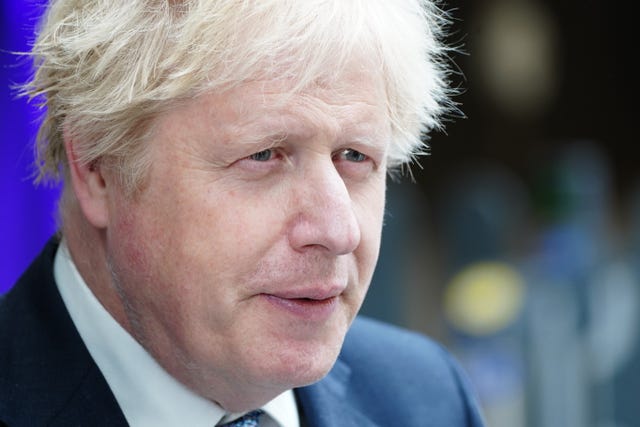
Nick Abbot 10pm - 1am
18 May 2022, 11:44

The Trade Secretary said the PM-backed idea is already a reality.
Communities that sign up to have onshore wind turbines built in their local area can use the funding involved to slash their energy bills, a Cabinet minister has said.
The Prime Minister last week pushed the idea of cutting the bills of households living near new wind farms, a policy that was mooted in the UK Government’s energy security strategy published last month.
But International Trade Secretary Anne-Marie Trevelyan said the policy is already a reality, explaining that a community funding pot allocated to areas agreeing to have turbines built locally can “right now” be used to reduce bills.
Energy prices have rocketed in recent months to add to the growing cost-of-living crisis, with regulator Ofgem increasing the energy price cap by 54% for the average household in April, and another hike is expected in the autumn.
Ms Trevelyan’s comments come against the backdrop of inflation reaching a 40-year high, with Consumer Prices Index inflation rising to 9% in the year to April – largely due to the energy price cap increase.
Taking questions after her speech on green trade in the City of London, the Trade Secretary said while offshore wind will deliver the bulk of the UK’s wind energy demand, communities can be compensated where there is a genuine want for onshore turbines.
“The framework remains the same,” she said in a major speech at Bloomberg’s headquarters.
“If there are communities or investors who want to look at onshore wind, and there are some in Scotland where the landscape suits it and the grid connections work, that’s something that continues to be the case.
“But we have always maintained that we want to make sure that the local communities genuinely are comfortable and want to have what is a big industrial investment in their community, so that continues to be already in the wind planning system.

“The relationship at the moment, the way it tends to happen, is there is a community fund which the community taps into.
“But there will be no reason to say that the community fund couldn’t also be, if the community said there was a payment towards their bills, that’s something the community fund could do now if they wanted to. Those systems are in place.”
Boris Johnson told reporters during his trip to Sweden last week that he was “not massively keen on onshore wind farms” but he would support locals in the “immediate vicinity” of new developments to be able to “abate” their energy prices.
Ms Trevelyan used her speech on Wednesday to set out plans to support green trade as part of efforts to wean the world off Russian President Vladimir Putin’s oil and gas in the wake of Moscow’s invasion of Ukraine.
She told the City audience about the need to “decisively turn our backs on the era of dependence on polluting fuels”, supporting British firms exporting technology to help with the shift to cleaner forms of energy.
The combination of sanctions on Russia and reduced reliance on fossil fuels will “de-Putinise the world’s economy”, she said.
NEW: Excited to announce two multi-million-pound loans with electric power manufacturer @MeggerUK and construction company @MaceGroup to bolster their growing UK exports, support their transition to sustainability and create new jobs ♻️🇬🇧Read more 👇 https://t.co/j3OSUur4gt
— Anne-Marie Trevelyan (@annietrev) May 18, 2022
The UK’s green economy is projected to grow by 11% per year to 2030 and the minister said “green trade spells green jobs”, predicting a six-fold jobs boom in the low-carbon sector.
Ms Trevelyan confirmed loan guarantees worth almost £190 million for two firms – electric power manufacturer Megger and construction company Mace – and announced a new Green Trade and Investment Expo in the North East this autumn to capitalise on the commercial opportunities as countries around the world seek to cut emissions.
The Trade Secretary said: “The financial case for green trade is very clear.
“The global market for low-carbon exports is growing rapidly and by 2030 it is projected to be worth almost two trillion pounds.
“With a potent combination of ambitious entrepreneurs, high ambitions and steadfast and determined Government backing, the UK is now in a leading position to take first move advantage.
“This translates to some exciting opportunities for us because quite simply green trade spells green jobs. In fact, by 2050 over 1.2 million could be directly employed in low-carbon goods and services sectors, a six-fold increase from today.
“That is a really extraordinary figure and will be critical to achieving our domestic goals of levelling-up across the whole of the UK too.”